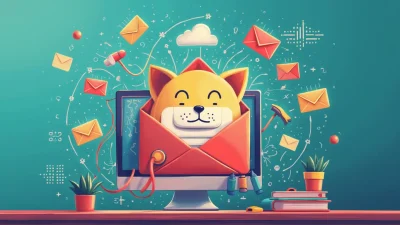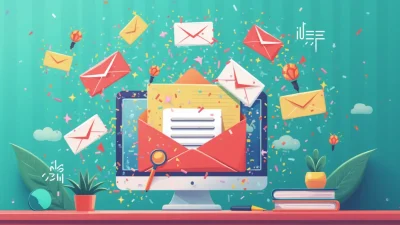Ever wondered how ’email coaching’ can skyrocket your productivity and communication prowess? In today’s digital world, mastering the art of email coaching isn’t just a buzzword—it’s a game-changer. Whether you’re a seasoned professional looking to enhance your mentorship skills or a newcomer eager to harness the power of structured communication, this guide will meticulously break down everything you need to know.
We’ll take you on a journey from the basics to advanced techniques, ensuring you leave with a toolkit ready to transform your coaching abilities. Ready to dive in? Let’s explore the ultimate guide to mastering email coaching.
Table of Contents
- Introduction to Email Coaching
- Benefits of Email Coaching
- Setting Up for Success: Tools and Platforms
- Crafting the Perfect Coaching Email
- Techniques to Enhance Engagement
- Overcoming Common Challenges
- Conclusion and Next Steps
Introduction to Email Coaching
Imagine having a personal guide, always available through your inbox, ready to enhance your professional skills. That’s the magic of email coaching. This innovative approach offers tailored advice and support directly via email, fitting seamlessly into your busy schedule. Whether you’re a budding entrepreneur or a seasoned professional, learning through email effectively bridges the gap between learning and implementing new skills.
- Convenience: Access coaching tips anytime, anywhere. No need for scheduling conflicts.
- Personalization: Receive customized advice tailored to your unique needs.
- Progress Tracking: Easily review past emails to track your growth over time.
Email coaching transforms sporadic mentorship into a constant learning journey.
Get ready to dive deep as we guide you through mastering email coaching, equipping you with the tools to succeed.
Benefits of Email Coaching
Are you wondering why email coaching is soaring in popularity? Well, here’s the scoop: it offers incredible flexibility and accessibility without sacrificing personalized support. Intrigued? Let’s break down why email coaching might just be the perfect solution for you.
- Convenience and Flexibility: Access coaching whenever it fits into your schedule. No more battling traffic or rearranging your day for a session. Simply log in when you’re ready.
- Continuous Access to Guidance: Unlike traditional face-to-face sessions, email coaching allows you to revisit advice and feedback at your own pace. This continuous access helps reinforce learning and development.
- Cost-Effective: Without the overhead of physical sessions, email coaching often comes at a fraction of the cost of traditional coaching, making professional guidance more accessible.
- Enhanced Reflection: Writing down your thoughts can boost clarity and concentration. With email coaching, you can digest and reflect on the advice at your own speed, leading to more profound insights.
Choosing email coaching means opting for a personalized learning experience that caters to your unique pace and style.
Imagine transforming your goals into reality with expert guidance by your side 24/7. With these benefits, email coaching proves itself as a highly versatile and productive tool. Ready to take the leap?
Setting Up for Success: Tools and Platforms
Wondering how to set the stage for successful email coaching? The right tools and platforms can make all the difference. Let’s explore what you need.
- Choose a Robust Email Platform: Opt for platforms like Mailchimp or ConvertKit, which offer automation and personalization features perfect for coaching programs.
- Integrate Scheduling Tools: Tools like Calendly or Acuity simplify arranging sessions, ensuring seamless communication with your clients.
- Leverage Communication Apps: Zoom or Microsoft Teams provide excellent video interaction opportunities, enhancing your email coaching experience.
Automation Capabilities
Email scheduling and tracking are essential for effective coaching. Use platforms with automation capabilities to streamline your processes.
Automation transforms your coaching, enabling you to focus on personalized interactions rather than logistical hurdles.
Benefit Summary Table
| Tool | Key Benefit |
|---|---|
| Mailchimp | Email management with advanced analytics |
| Zoom | High-quality video calls |
| Calendly | Effortless scheduling |
With these tools in your arsenal, you’re well on your way to effective email coaching. Ready to dive in?
Crafting the Perfect Coaching Email
Email coaching is a powerful tool when it comes to developing skills and building relationships. But how do you create an email that truly stands out and serves its purpose? Let’s dive into the steps.
1. Start with a Clear Objective
Why are you sending this email? Define the goal clearly. Whether it’s providing feedback, setting goals, or offering support, having a clear objective guides the content, ensuring it’s impactful and on point.
2. Personalize Your Approach
Everyone loves to feel special! Start with your coachee’s name and reference their recent achievements or challenges. This immediately establishes a connection and shows your dedication.
3. Be Concise and Structured
Nobody enjoys reading walls of text. Break your email into small, manageable sections. Use bullet points for clarity and brevity. Remember, less is often more.
4. Provide Valuable Feedback
Focus on actionable advice. Rather than simply pointing out errors, suggest clear steps your coachee can take to improve. This adds value and shows your commitment to their growth.
5. End with a Call to Action
What do you want your coachee to do next? Encourage them to reflect, schedule a follow-up, or try a new technique. A strong call to action keeps the momentum going.
Key tip: Effective email coaching builds trust and engages your reader on a deeper level.
Techniques to Enhance Engagement
Ever wondered how to make your email coaching sessions irresistible? Engagement techniques hold the secret! Let’s explore ways to captivate your audience.
- Personalize Your Messages: Use the recipient’s name and reference past interactions. Personal touches can turn a generic email into a memorable experience.
- Use Storytelling: Share relatable anecdotes that resonate with your readers. Stories create emotional connections that boost engagement.
- Include Interactive Elements: Try adding polls or questions at the end of your emails. This simple call-to-action encourages responses and increases interaction.
- Optimize Your Timing: Test various times to send your emails and find when your audience is most responsive. Timing can be a game-changer in maximizing impact.
Using Visuals Effectively
Incorporate images or graphics to make your emails visually appealing. A well-placed chart or infographic can simplify complex ideas, making information more digestible. It’s not just about reading; it’s an experience!
Key benefit of using email coaching: Enhanced personal connection and improved skill transfer.
| Technique | Description |
|---|---|
| Storytelling | Emotional connection through relatable narratives. |
| Interactive Elements | Encourages direct responses and engagement. |
Overcoming Common Challenges in Email Coaching
Email coaching is powerful, yet it comes with unique hurdles. How do you tackle these obstacles effectively? This section helps you address them with ease, ensuring your journey is smooth and rewarding.
- Building Rapport: Start your communications with a warm, personal touch. Share an inspiring story or ask open-ended questions to foster connections.
- Maintaining Engagement: Use engaging subject lines and incorporate actionable insights to keep your coachee interested. Remember, the key is to provide value in every message.
- Ensuring Clarity: Be clear and concise. Break your guidance into simple steps and check in for feedback. Use visuals if necessary to enhance understanding.
Effective communication is the cornerstone of successful email coaching.
Conclusion and Next Steps
You’ve mastered the essentials of email coaching. Now it’s time to put these strategies into action. Start by drafting personalized emails, track your progress, and make adjustments as needed. Your journey towards email expertise begins now! Ready to dive in?



